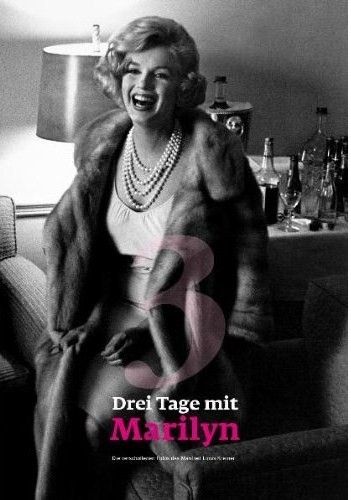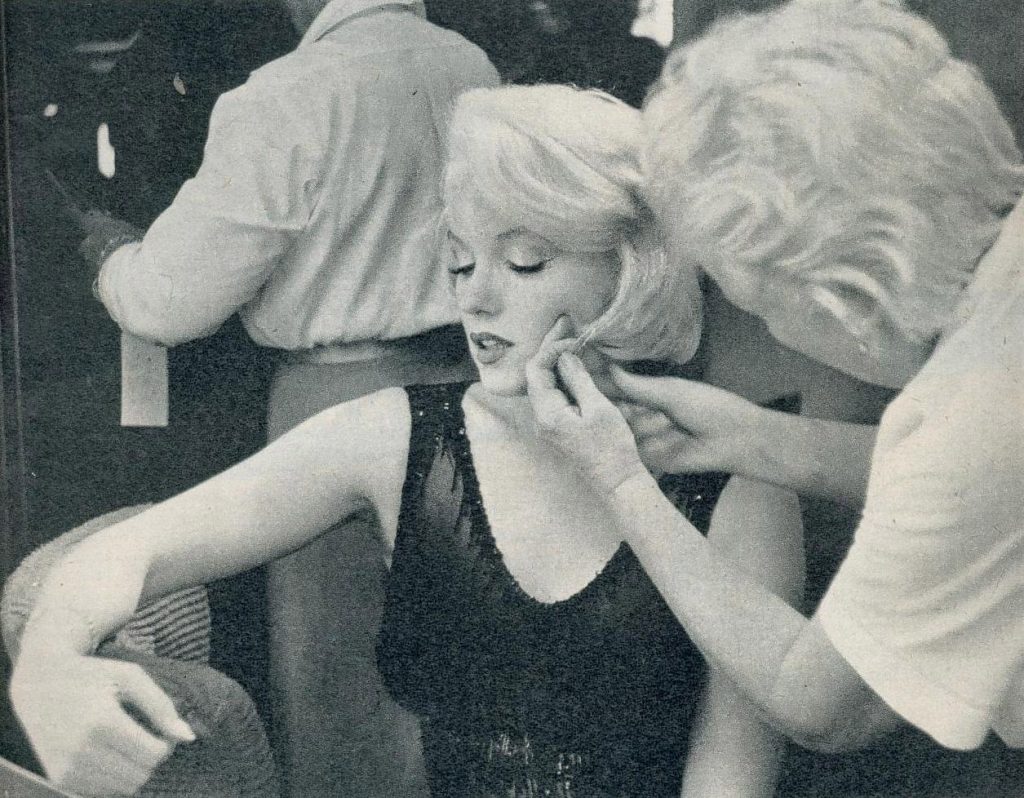
Ireland pays tribute to Marilyn next month, with screenings of Some Like it Hot in Dublin (August 8th) and Cork (August 25th.) More details here.
Marilyn Monroe 1926-1962

Ireland pays tribute to Marilyn next month, with screenings of Some Like it Hot in Dublin (August 8th) and Cork (August 25th.) More details here.
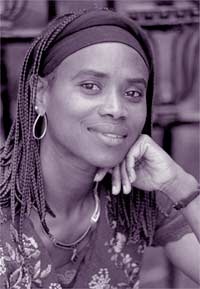
Here’s an interesting fact: the Rev. Irene Monroe, this year’s recipient of the Gay & Lesbian Advocates and Defenders’ Spirit of Justice award, was named after Marilyn.
‘Abandoned in a trash can as a baby, she was named after Sister Irene, a nun at a New York hospital, and actress Marilyn Monroe,’ reports the Human Rights Campaign blog.
Irene is now an ordained minister and writes regularly for the Huffington Post about religion and gay rights. I think Marilyn, who was passionate about equality in her own lifetime, would be proud to have inspired her name.
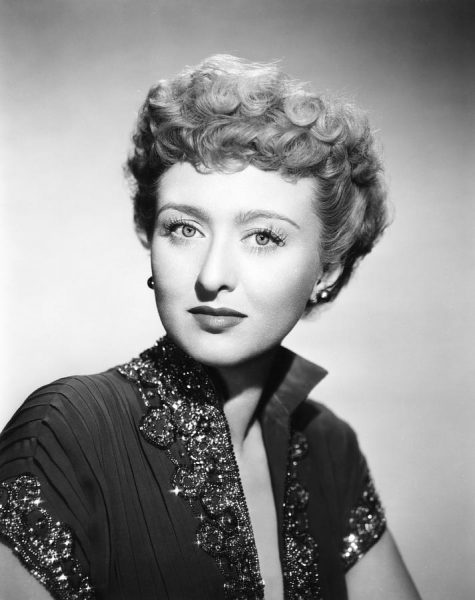
Actress Celeste Holm – who played Karen Richards in All About Eve – has died aged 95, reports The Guardian.
Born in New York, Holm made her name as Ado Annie in the 1943 Broadway production of Oklahoma! She won an Oscar for Gentlemen’s Agreement (1947), and narrated A Letter to Three Wives (1949.)
After the success of Gentlemen’s Agreement, Holm asked Darryl F. Zanuck, head of Twentieth Century-Fox, for a pay increase. He responded by suspending her contract, and then ‘called the head of every other studio and said he had fired me because I was too difficult to work with.’
Nonetheless, director Joe Mankiewicz cast Holm in All About Eve (1950) as Karen, best friend to temperamental stage star Margo Channing (Bette Davis.) According to Sandra Shevey, author of The Marilyn Scandal, Mankiewicz insisted that Holm be paid three times her contract salary. However, Zanuck got even ‘by having my dressing room put in the alley outside the soundstage. The others were inside.’
‘That girl will be a big star,’ said actor Gregory Ratoff, who played agent Max Fabian, during filming of All About Eve (1950). Holm rolled her eyes and retorted, ‘Why, because she keeps everyone waiting?’ To which Ratoff replied, ‘She has a quality.’
‘I confess I saw nothing special about her,’ Holm admitted. ‘My natural reaction was: “Whose girl is that?” She was scared to death, because she was playing in a pretty big league…I never thought of Marilyn as being an actress, even in the films she did later on.’
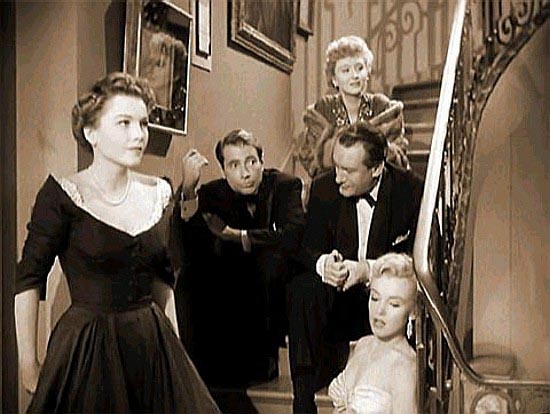
Holm was a friend of Dr Ralph Greenson, who became Marilyn’s psychoanalyst in 1960, and she would met Monroe at one of his house parties. This surprised Holm, perhaps because she considered herself to be part of Hollywood’s intellectual elite and had hitherto dismissed Marilyn as a dumb blonde.
Holm also noted that the young Marilyn idolised Betty Grable, with whom she would later co-star in How to Marry a Millionaire (1953.) This was confirmed by Grable herself, according to Michelle Morgan, author of Marilyn Monroe: Private and Undisclosed.
Holm returned to Broadway, but later sang ‘Who Wants to Be a Millionaire?’ with Frank Sinatra in High Society (1956.) In 1968, the won the Sarah Siddons award for Distinguished Achievement in Chicago Theatre. (Ironically, the Siddons award had featured in the storyline of All About Eve.)
Holm continued working in television and film until the early 1990s, and her former ambivalence towards Marilyn did not hinder her from appearing in various documentaries about her.
In recent years, Celeste Holm been treated for memory loss, and was in poor health for some time. She is survived by her sons and a fifth husband, opera singer Frank Basile.
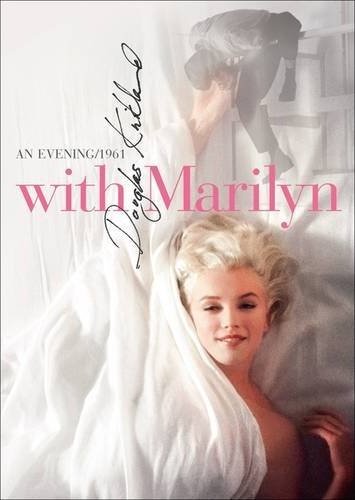
Douglas Kirkland took some of the most sensuous photos of Marilyn in 1961, and these images are collected in With Marilyn: An Evening, due out on July 25th. (This promises to be an improved version of his 2006 book, now out of print.)
Leslie Kasperowicz recently interviewed Kirkland for Immortal Marilyn, where he talked about the book and his memories.
“Although Marilyn had struggled for many years to be taken seriously as an actress, she never lost sight of the fun side of being a star. If there was some sadness in her, returning to Los Angeles at the end of her marriage to Arthur Miller and returning to her sex symbol status, it doesn’t show in the photos found in this book. And Douglas Kirkland doesn’t think she was sad about putting her body in the spotlight again, or at least that side didn’t show. Instead, she was excited to be photographed after a long time away from the camera. ‘I am sure that was part of her, but that was not the Marilyn I spent the evening with. The Marilyn I was with just had an intense heat. She’s seducing, and that is what remains in these pictures.'”
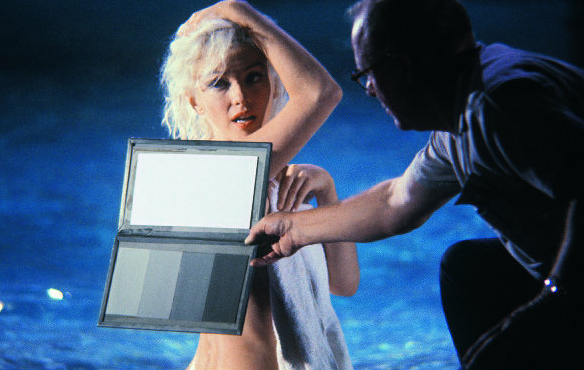
Jeff Simon’s review of Lois Banner’s Marilyn: The Passion and the Paradox – due out in the US later this month – suggests that this will be a controversial book.
(Now personally, I’m all in favour of opening up the debate – and books which make me re-evaluate my preconceptions, whether or not I agree. So I won’t be adding my own opinions here until I’ve read the book in full.)
What interested me most in this review was the contrast between Banner’s portrayal of Marilyn and Lawrence Schiller’s in his recent book, Marilyn & Me.
“While Banner’s guess is that Monroe might have gone on to have a career like Barbara Loden’s – the actress who was married to Elia Kazan and who portrayed the Monroe figure in Arthur Miller’s ‘After the Fall’ – it is also more than possible that the rebel generation coming up in Hollywood would have seen a sympathetic soul at the very least and might have figured out whole new masterpieces for her and whole new ways of filming her quite different than the routine humiliations of even some of her greatest films. (Think of what Scorsese or Altman or Hal Ashby or Francis Ford Coppola might have invented for Monroe in her 40s as feminism changed completely the savage spotlight that followed her – and demeaned her – everywhere.)
…Lawrence Schiller took the famous, unique late-period nudes in which she revealed herself to be the greatest genius of all in the art of exploiting Marilyn Monroe. Quite possibly she was cognizant even then of what would become her true immortality – not completely as a film actress, where she was erotic and radiantly beautiful but often painful to watch in a post-feminist era, but a photographer’s model. It’s there where she can be captured to perfection – frozen in time, all exterior, a flesh and blood masterpiece of white on white, suitable for any and all gallery walls.”
Read the review in full at Buffalo News
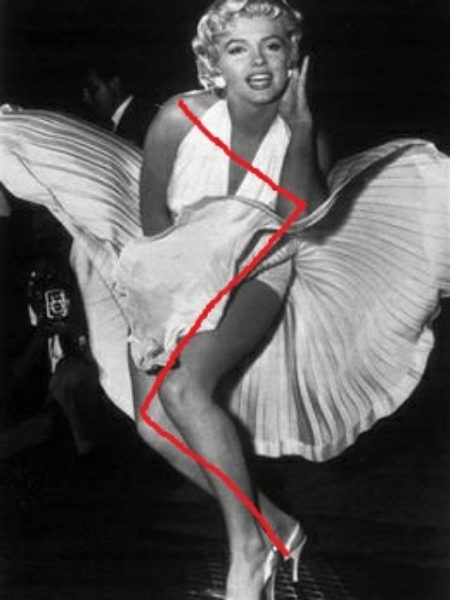
Abby Hannah Kacee analyses in depth the most famous poses struck by Marilyn during filming of the ‘subway scene’ in The Seven Year Itch, photographed by Sam Shaw.
“Monroe is directly in the middle of the shot, looking at the lens head-on. She is smiling and looking seductively at the camera. Little else can be seen in the image other than Monroe. The viewer’s eye is drawn immediately to Monroe’s face and expression, then is meant to continue looking down to her feet. Her right hand is pushing down the front of her dress, as if she is trying to be modest, but with the wind from the subway beneath her, there is too much dress for her to counteract the wind.
The dress itself has also become iconic focus of the photograph. The ivory, angelic, flowing dress was chosen purposefully for this movie and for Monroe. The dress easily catches in the wind and flies up, revealing Monroe’s long, beautiful legs. However, while she attempts to hold it down, the dress gives the viewer the sense that Marilyn has wings, like a butterfly or angel.”
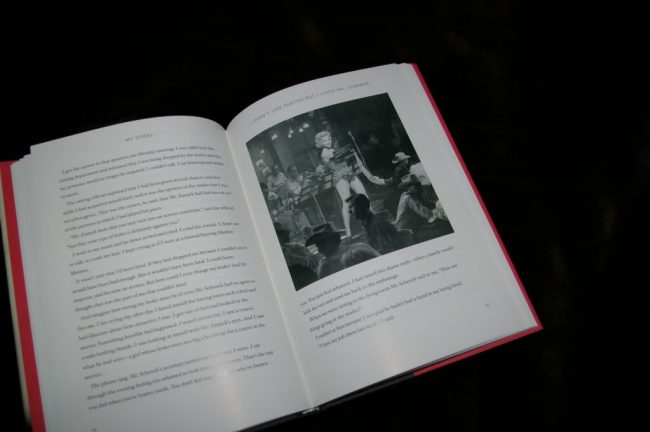
The New Yorker takes a look back at the exploits of literary agent Jacques Chambrun, whose unscrupulous behaviour derailed My Story, Marilyn’s 1954 memoir (as told to Ben Hecht.)
“When Ben Hecht ghost-wrote Marilyn Monroe’s memoir, Chambrun sold a scandalous passage to a London tabloid for a thousand pounds with neither Monroe nor Hecht’s permission; Monroe was so unnerved by the article that she rescinded her support for the book and Hecht had to return his five-thousand-dollar advance to Doubleday. (‘My Story’ was eventually published, twenty years later, but Hecht was not credited until the book’s third printing.)”
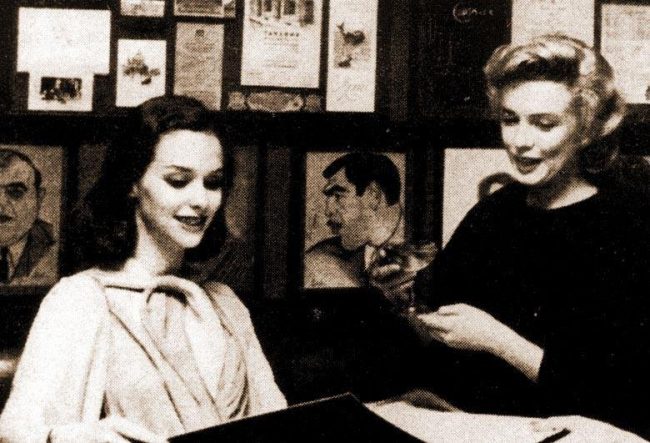
As part of her ongoing series of MM-related book reviews, Elizabeth Periale takes a look at Susan Strasberg’s 1996 memoir, Marilyn and Me: Sisters, Rivals, Friends.
“Written approximately 30 years after Marilyn’s untimely death at the age of 36, Strasberg is still able to write from a teenage perspective. She may have been in awe of the glamorous movie star, but she was mostly envious of the attention her father payed her. Even while in the throes of a passionate love affair with Broadway costar Richard Burton, Strasberg can’t help but complain how available her father made himself for Marilyn at all hours. Once Marilyn moved to New York and started taking private acting lessons with Lee, she used the Strasberg home as her refuge — before, during, and after her marriage to playwright Arthur Miller.”
You can read Elizabeth’s review in full here.
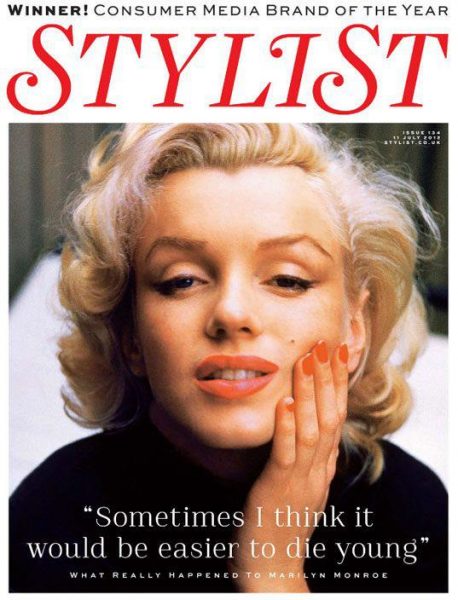
Marilyn makes the cover of the UK’s Stylist this week. This is a free magazine, but often hard to find. Keep your eyes peeled when you’re passing by boutiques. Inside is an article looking at various theories about Marilyn’s death, which you can also read here.
(Incidentally, that cover quote in full is “Sometimes I think it would be easier to avoid old age, to die, young, but then you’d never complete your life, would you? You’d never wholly know yourself.” Marilyn reportedly said this to author W.J. Weatherby.)

The Luxembourg City Cinematheque is hosting an MM film festival this summer, with an exhibition of photos by Manfred Linus Kreiner, and – weather permitting! – outdoor screenings of Niagara (July 14); River of No Return (July 21); Some Like it Hot (July 28); and in August, The Seven Year Itch, Bus Stop and The Misfits.
